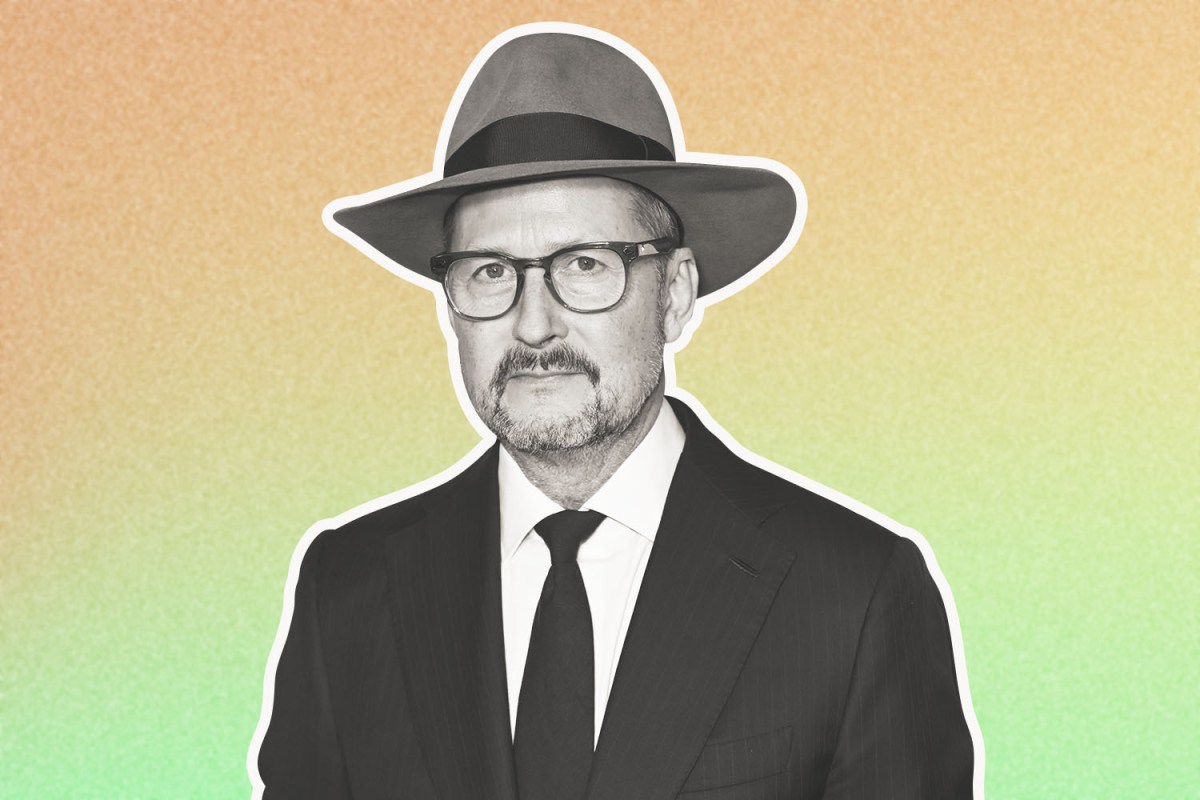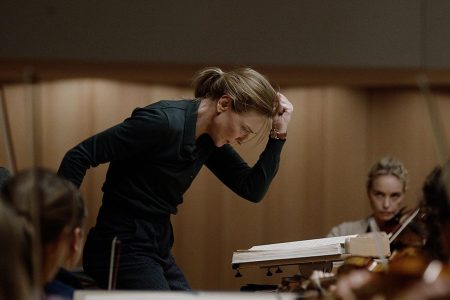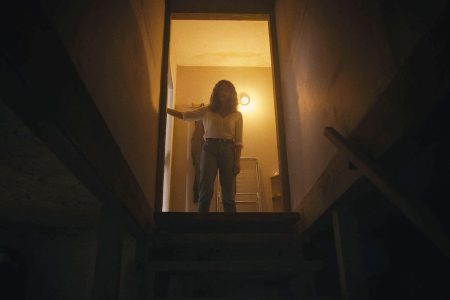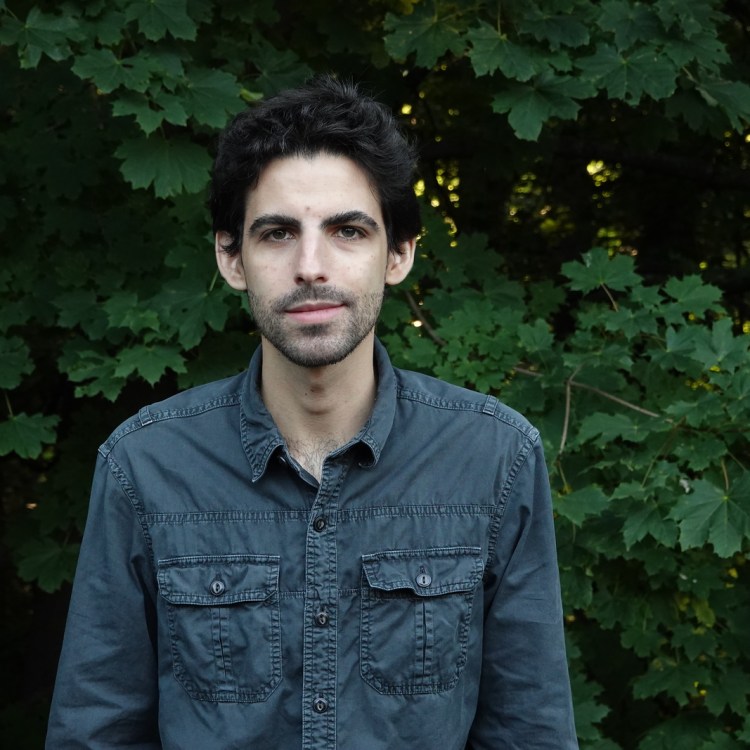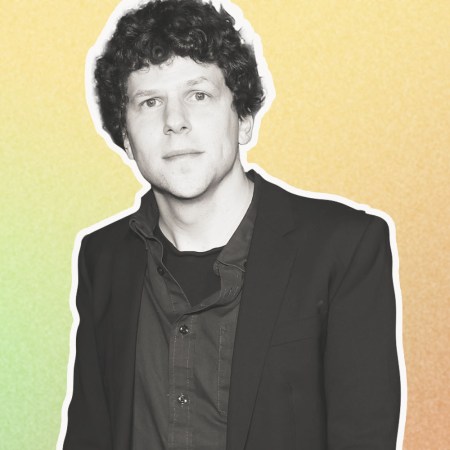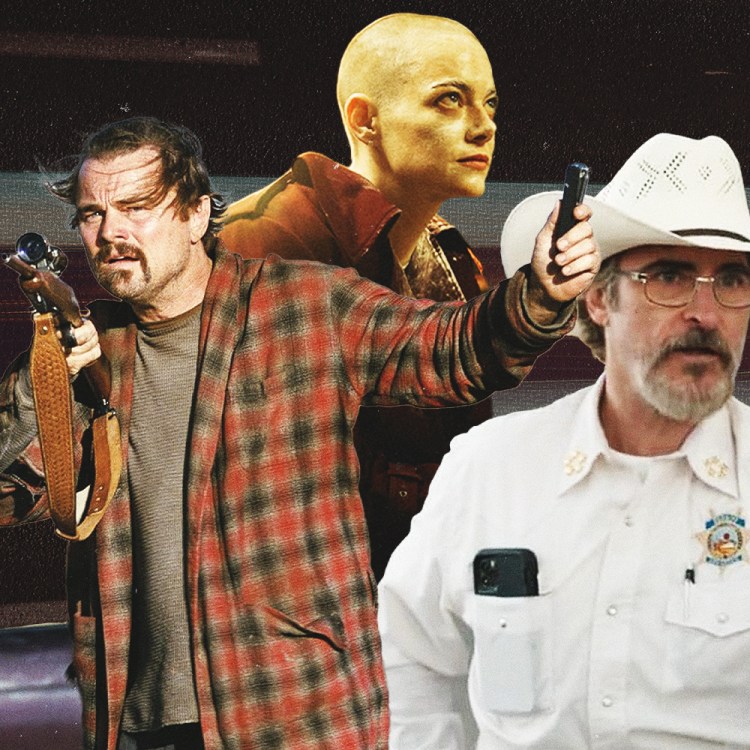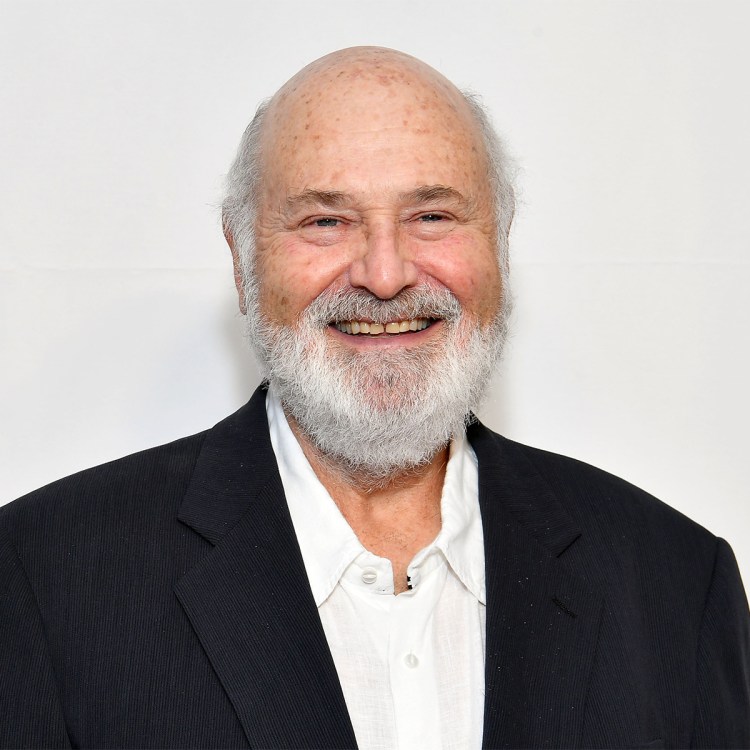“I don’t think sound ever gets enough attention,” filmmaker Todd Field tells me during the first 60 seconds of our conversation. “It’s been surprising to me how little people talk about it and how much they squander the opportunity.”
It’s mid-March, and I’m at work on a feature about Alfred Hitchcock’s The Birds at 60 and how the film’s disturbingly quiet sound design — which famously eschewed a traditional score in favor of cutting-edge sound effects and diegetic music — influenced the sound of cinema and presaged the rise of “quiet horror.”
My thoughts keep turning to Tár, Field’s recent masterpiece about a world-renowned conductor, Lydia Tár (Cate Blanchett), whose walls are closing in. Now there’s a movie that understands the claustrophobic power of quiet. Despite, or perhaps because of, its classical music milieu, the film steers away from anything resembling a conventional orchestral score, allowing the pieces performed onscreen (notably, Mahler’s Fifth Symphony) to assume powerful prominence. And when there isn’t music performed onscreen, the film’s default (even with Hildur Guðnadóttir’s minimalist score) is an uneasy quiet, highlighting the anxieties and debilitating sound sensitivities of Lydia Tár herself.
I reach out to representatives for Field, who wrote and directed Tár after a lengthy absence from filmmaking, not expecting much: an emailed comment? A brief phone chat? Word trickles back: Field is eager to talk about sound.
The filmmaker had a lot to say. On March 18 — six days after the Oscars — he calls me from holiday in Mexico, and we have a fascinating, 45-minute conversation about his meticulous approach to sound design and the many movies that inspired him. His passion for the oft-ignored subject is obvious.
I wound up with far more insight into Tár (as well as Field’s previous films, 2001’s In the Bedroom and 2006’s Little Children) than I could possibly quote in my Birds feature. So, with Field’s blessing, I decided to publish the conversation in Q&A form. Here is that interview, lightly edited and condensed for length.
InsideHook: Sound is central to Tár on so many different levels. Obviously, it’s a film about a composer, but it’s also a film about a character who has an intense sensitivity to sound. What really struck me is that it’s very quiet. There’s very little non-diegetic music in the film, particularly in the opening sequences. Why did you choose to do it that way?
Todd Field: Well, she’s a character that suffers from misophonia and misokinesia. There’s a couple of ways of dealing with those allergies. One would be to try to gild them and be inside her head, and that would be perfectly logical as an approach. The other is to not do that and see how sound works on her. And see how she deals with her allergies as opposed to trying to be in her auditory point of view. A lot of that came out of the script, insomuch as we spotted the script.
There’s actually quite a bit of non-diegetic music. It’s just mixed very, very low. There’s 40 minutes of Hildur [Guðnadóttir]’s score. And that score is introduced on a brush stroke of Cate’s hair when she’s in the bathroom of the Carlyle Hotel — that’s the first “in.” That level stays pretty much consistent until towards the end. Then you feel the level of that score in its absence. It sort of waves at the audience for the first time coming out of these interior experiences that she’s having. But it’s there.
It’s almost like this faint hum.
It’s not meant to be noticed. I did the same thing on the other two films. If you look at In the Bedroom, there’s a point where I have a cello playing a continuous A. That A goes on for about 40 minutes. And it doesn’t stop until Tom Wilkinson raises the gun on William Mapother. But it’s mixed very, very low.
Hildur and I spent 14 months working on the score [for Tár] and working on an approach for the philosophy for the sound for the film. In terms of the sound design, our birds in this movie are a character who’s attenuated to sound in a very particular manner. She’s attenuated to sound in a fashion that, if you speak to conductors, it’s not uncommon that they have a version of this affliction. There’s a reason they’re drawn to that vocation, because it’s the only time they can control sound. They’re bothered by sound. They don’t like background music. I asked [Venezuelan conductor] Gustavo Dudamel a few weeks ago: “What do you listen to at home?” He’s listening to everything but classical music.
If you’re a composer and/or a conductor specifically, listening is work. But listening is also pleasure because you have control over it. And the outside world doesn’t play so nice. For this film, it’s a character we’re meeting at a very particular moment in time. She is about ready to summit what she thought was going to be a very important peak for her. And the world is starting to creep in on her in all sorts of manners. She has the sound that’s the next-door neighbor [who] has a caregiver alarm. There are all these sounds that are informing her. And the question is, what is she hearing? Is she manifesting it herself or is she really hearing it? Is she really hearing someone screaming? Is she really hearing someone in the hotel room? At the end of the day, it doesn’t really matter. It’s a way to try to get ourselves firmly planted in her shoes.
It’s an intense subjectivity that is communicated through the sound design.
Yes. And that’s a very tricky thing. Monika [Willi, the film’s editor] and I — most of our editing was shooting sound. We were alone up in Scotland. It was the second lockdown. We recorded sound constantly. We would send it back and forth to Stephen Griffiths, our sound designer. The editing was as much sound-editing and working with our sound crew intently as it was picture editing.
To do a very quiet mix is tricky for all kinds of reasons. Most theaters’ delivery systems are so wonky and so overcooked because of the product they’re used to pumping through them. Lots of speakers are blown out. If you’re trying to do anything that’s pointillistic or anything where you’re directing people towards very particular points of an auditorium, so they feel that they are in her perspective, you might be stymied. It’s a very masochistic approach, honestly. That was borne out as I ran around and started tuning theaters in New York and Los Angeles before the opening of the film.
You were very focused on making sure the sound mix wasn’t undermined by the theaters?
Correct. There was one theater in Babelsberg where I walked in and went, “Oh my god. It’s perfectly balanced.” There’s a Bartos Theater at the Museum of Modern Art: “It’s perfectly balanced.” Every other theater, I had to go in and re-tune, including the brand new Academy Theater. I had to tune all of them.
There’s no uniform way of dealing with sound in a movie theater. What’s shocking to me, as someone who really cares about sound, is to know that mostly you’re going to be disappointed. And that has to do with a much larger issue, which is the destruction of specialty movie houses, which used to be run by people who really paid attention. Like Liz, who runs the theater in my town, The Strand in Rockland, Maine. That theater sounds great. But if I go in the multiplex at Century City, it’s gonna sound like shit.
“TÁR” Is the First Movie to Really Get Cancel Culture Right
Director Todd Field’s film is the first nuanced, non-embarrassing take on the issueWhen I saw Tár at an AMC multiplex, the sound design was so quiet that I could hear explosion sounds coming from whatever movie was playing next door. And at times I couldn’t tell if the rumbling bass was coming from another room or if it was part of Tár.
Absolutely. The walls are thin. The other theaters are cranked. Even though it’s bleeding in, I guarantee, the other houses, they’re not running 85 decibels. They’re running it down at like Dolby 5 because it’s so fucking loud. Whereas our film, if you run it 85 decibels, it’s true. But it’s still quiet.
Hitchcock famously avoided a traditional film score for The Birds. I’m curious to know if The Birds was an influence on the sound design of Tár.
Not consciously. I would say that The Birds has infected anyone, consciously or subconsciously, that thinks about films… It’s a fantastic example of how sound can be used. It’s why horror is so affecting, even when you know it’s coming. Because of the way horror films deal with sound.
Yet it’s unlike most horror films because there’s no non-diegetic music. Hitchcock had worked with Bernard Herrmann on iconic scores for Psycho and Vertigo. When he did The Birds, he completely rejected music.
That’s the thing. I sat with [film composer] Tom Newman back in January. They were gonna do a so-called American Cinematheque retrospective of my films — all three of them. We went back to watch In the Bedroom for the first time. There’s only 23 minutes of music in that film. Tom said, “You know, movies don’t need that much music. I would have done less.” And I think that’s an underutilized opportunity, [to use] sound design in a way to sort of pull you into something and set some rules down, like Hitchcock does at the beginning of this. The rules are very clear, right? He’s promising something, and then he delivers on that promise. There’s nothing more frightening or more thrilling than this idea that you’re being hunted — and you get to hear the sound of the creature that’s doing the hunting.
We deal with this in our everyday life all the time. I’m in Mexico right now. Every morning, this is what I hear at 7:30 in the morning: [imitates loud, animalistic screeching: Achhhh! Accccchh!]. Every fucking morning, I hear this. Now I go upstairs, and there are these bushes to the right and these bushes to the left. The sound is emanating from these bushes. And it’s driving me crazy because I don’t know if this is a primate or if it’s a bird. And if it’s a bird, what does it look like and how large is it? Should I have the kitchen closed? Should I be worried?
Finally, yesterday I crawled out on this ledge. Had I slipped out, that would have been curtains for me, or at the very least, I would have been in bad shape for a very long period of time. Just to find what the source of this was, and of course, it was this bird. Once I could identify where this sound came from, I was very calm. But it was driving me crazy! And that’s the power of sound. There’s always a question mark attached to a noise. You’re either oriented or you’re disoriented.
In a conventional Hollywood film, music is an emotional shorthand. Hitchcock rejected that with The Birds, and ultimately it’s more realistic. It feels more like watching life unfold. I think that’s what you accomplish with Tár. Even though there is a score, it’s so subtle that it fades into the ambient sound of the city.
It would have been absurd to underscore someone’s life who makes music for a living. People have done it recently in several films. But I don’t know why one would do that. It seems like a gigantic missed opportunity because the interesting part, for me, in someone’s life, are the in-between places. And if they’re making music, then the in-between places become really important.
It feels like the music Lydia Tár is conducting or playing herself essentially becomes the soundtrack in the film. The Bach piece, the Mahler symphony — that all becomes part of the musical framework of the film.
It does. Like I said, Tom [Newman] and I made two films together. And I think, on average, Tom did about 26 minutes’ worth of score. That was a really considered decision on his part and on our part together. In this film, the diegetic music — there’s 26 minutes of it. It’s as long as any score that Tom Newman did on my other two films. It’s live. They’re not alternate takes; there’s no playback. She’s conducting, the orchestra’s playing. She’s playing the piano. If Sophie Kauer’s playing the cello, she’s playing the cello.
Films are fairytales and myths and fables and all that. But it seemed like a really important thing that the music you’re hearing in the film be absolutely authentic. So, I’d already reached my limit for how much music I want you to be consciously aware of in a typical film just by what was played onscreen.
“Barbarian” Offers a Delightful Twist on Horror Movie Conventions
The tale of an Airbnb rental gone wrong has plenty of tricks up its sleeveWhen you made the jump to director, were there any films that really influenced you with their minimalistic scores or lack of scores?
Of course. Look at all Kubrick’s films. Look at 2001, the way he deals with his sound design. The way he did it was very much the way an amateur or a student would do it: He recorded all his own Foley. If you listen to Gary Lockwood breathing, that’s Stanley. That’s sort of philosophically a very film-school way of working.
[I learned] mostly through watching European cinema, watching early American independent cinema — Cassavetes and others — to see how people dealt with sound. It feels like the idea of four-walling music from frame one to frame 10 million really came in later, in like the ’80s into the ’90s, where scores were plastered on.
Go back and look at Raging Bull. Look how Marty deals with sound in that movie. It’s incredible. And the way the dialogue is recorded in that film. I think I remember reading someplace — or maybe I asked him about it — which is, even the mic placement [is arranged] so that you felt the rooms more. The voices weren’t so on mic. I learned this in school. I worked as a boom man on a movie once. You can change a performance by how close the mic is to an actor. You can make them sound like they’re in a TV movie or you can make them sound like Meryl Streep. It’s really about perspective.
If you look at the 1970s movies that we all know and love, those are very good films in terms of integrity of sound, in terms of perspective of sound. What is the philosophy behind the way you record? It’s really fun to watch a Robert Altman movie where you can hear everybody because they’re all on radio mics. Look at how [Alan J.] Pakula dealt with All the President’s Men. Look at the famous scene where you’re about ready to get a big piece of exposition, they’re sitting at an outdoor restaurant, you’re waiting for the reporter to get it, and all of a sudden a jet flies overhead and you miss it. Or look at the greatest example, Coppola’s The Conversation. If that doesn’t make you fall in love with the possibilities of sound outside of score, nothing will.
That’s a wonderful example because it’s a film so much about sensitivity to and obsession with sound. But that film does have a very prominent musical score by David Shire.
It does. But by “prominent,” you mean deliberate. There’s a sense of intent behind it. It’s not like Vangelis. It’s not like [Hans] Zimmer. It’s probably important not to ghettoize music from sound, whatever that means, because it’s all noise, right? It’s more about intent. Like, what is the intent of the noise you’re hearing?
Do you feel like in today’s filmmaking, directors tend to over-rely on musical score?
I wouldn’t make that kind of generalization because I don’t tend to see everything. I think there’s an undeniable sea change that you feel in the 1980s kinds of studio movies that seem to be accepted by a general audience. Just like a general audience would go, “Wow. Look at those visual effects, they’re so cool!” When I came up, the idea of visual effects are supposed to be invisible. If you can point to them, they probably weren’t very good visual effects.
So, the idea of populous pretense as an accepted form of entertainment — the pretense itself, the artifice itself, being something that people enjoy and not the invisibility of it. Or not necessarily the intent. Just the grabbing you in a very particular way and not letting you go until the movie was over. And being terrified that you might ever wander, ever be bored. That’s a different kind of investment for an audience than giving an audience room to imagine or room to fill in the blanks.
There’s this trend of horror movies that are found-footage horror. Those are horror films that tend to withhold non-diegetic score. They want to seem as real as possible. In a way, that’s what the sound approach of Tár reminded me of. It’s this intense realism that you don’t get a lot from bigger-budget movies these days.
I suppose that’s true. I had to really convince [the sound team], “You don’t need to worry about pushing air through the speakers. You don’t need to worry that this is too low. What we’re looking for is a three-dimensional audio separation where there’s a dimensionality to what you’re hearing.” I had to go to Stephen [Griffiths, sound editor] and say, “You can’t give me any backgrounds.” Mona — Monika Willi — and I knew the sound because we built most of the sound we sent to Stephen. We had spotted the sound ourselves.
When you say you spotted the sound yourselves, what do you mean by that?
Well, we built the sound out in Scotland. If we needed a sound, we’d shoot that sound. If it wasn’t right, we’d shoot it again. Then Mona would cut it in. It would be frame-accurate. We knew the sound of the film — crudely, unmixed — but we knew where all the bodies were buried by the time we got into Abbey Road. Stephen, doing his job, being a professional, would have options for us. And sometimes those options would appear without being introduced or explained. And both of us would jump on our feet and go, “Uh oh. There’s a problem.” We were just trying to strip sound away.
So, the atmospheres themselves were absolutely real. Anything that you added to that atmosphere was with intent. There was nothing arbitrary about anything you heard in the film, ever.
One of the most striking moments is the woman’s scream that she hears when she’s jogging. That’s a moment where the sound really overtakes the audience. I’m sure you had a really deliberate process of how to record that sound and how you approached it in the film.
That sound was honestly fairly arbitrary and a placeholder. The original intent behind that sound was it was always gonna be Cate screaming. To have her do that would take a four-hour warm-up because you would literally lose your voice. At a certain age when we’re young, we can scream like that. But that was always the idea: the character was hearing herself screaming.
Now, in actual practice, we were in the middle of Scotland. We were bubbled. We weren’t allowed to have contact with anyone. John Kolesnikow, my apprentice editor, grabbed that sound and threw it on there as a placeholder and we kind of forgot about it. We just got used to hearing it. The sound wanted to have a particular feeling of someone terrified and potentially being physically attacked. But yeah, that’s the one place in the film that was there by default and simply by our dislocation and lack of access to Cate Blanchett.
So, what are you writing…
Well, it started as a piece about the 60th anniversary of The Birds. I’m looking at a variety of different films and how less can be more when it comes to music in films. How a variety of different films achieve a certain realism by focusing on the diegetic sound of the film itself.
Have you ever watched any regional cinema, like Victor Nunez’s films. You ever watch any of his movies?
I haven’t.
Well, Victor sort of started the so-called independent film movement long before the Sundance Film Festival. He’s based in Florida. Basically a regionalist. And most of his films are very human-sized and take place down there and are very quiet films. I know his films because I actually acted in one of his films. It won the Grand Jury Prize at Sundance in ’93, called Ruby in Paradise. He also made this film with Peter Fonda called Ulee’s Gold. But he doesn’t use a great deal of sound in his films.
That’s interesting. So, is Ruby in Paradise the one I should seek out?
Yeah, maybe. You know another film? I watched this film with Paul Thomas Anderson a couple weeks ago that I hadn’t seen since film school, which was The French Connection. The French Connection starts out like [makes “BAAAHH” noise, imitating orchestral score] — it promises that there’s gonna be the greatest score you’ve ever seen in your entire life. It’s really muscular. And then there’s no music! Have you seen it recently?
No, not recently.
Well, you wanna talk about sound design? I mean, this film was made on a million and a half dollars. It’s 1971, it wins Best Picture, and there’s really no score in the film. The opening credits promise in the same way that Hitchcock’s The Birds promises at the beginning. Really blunt. And then there might be two other places where there’s just a motif that comes up. And that’s it.
The rest of it is all sound design. And the sound design in the movie is particularly impressive because, as Paul pointed out, they were using non-blimped cameras. They were using these Airy 2’s that would sound like “AAAAARRRRR” — they’re not sound cameras. Because they didn’t have any money. But the sound design feels absolutely real. It feels like a production recording. It doesn’t feel like anything was done in post. It’s a great, great film to take a look at.
This article appeared in an InsideHook newsletter. Sign up for free to get more on travel, wellness, style, drinking, and culture.
